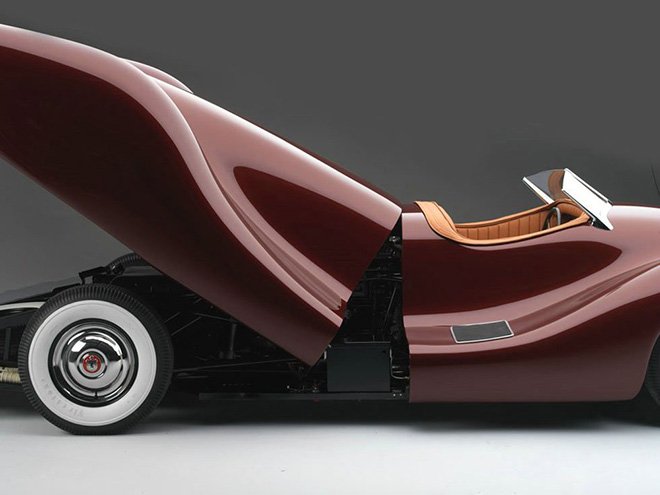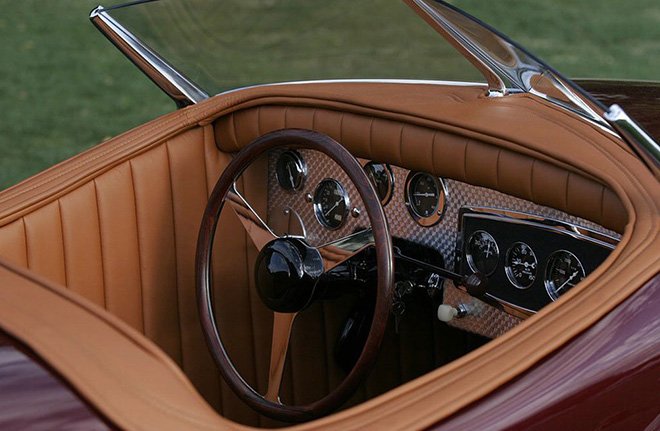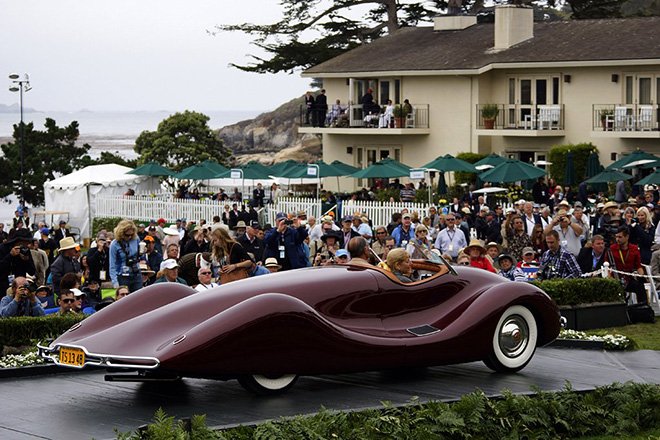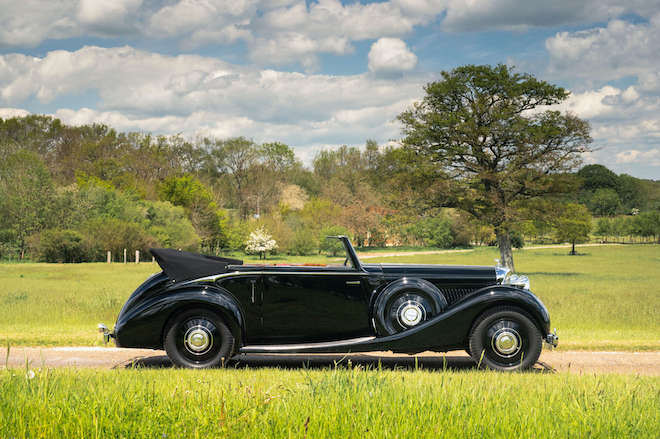
Most of us enjoy a TV mystery drama, and the story behind the rediscovery of this magnificent car’s lost history would make for an extraordinary film. Filled with modern science, extensive research and dogged determination, this unusual Drophead Coupé (DHC) Bentley by James Young has been forensically restored and re-discovered over a tumultuous five-year period. The classic car world is blessed in having owners who are so passionate about their love for cars that they would dedicate endless amounts of time and money to restoring these vehicles. In doing so, they return to us and the world pieces of the car’s illustrious history.
What started out as the vendor’s quest to get the origins and provenance of B1 72 KT correctly documented has led to the discovery and restoration of an extremely rare DHC Bentley.

“Whilst not quite a barn find, I purchased the vehicle back in late 2013 as a huge jigsaw puzzle,” the vendor started. “Having been advised that the body shell and various other parts were about to be auctioned off at Sotheby’s ‘as is’ with a reserve of just £60,000. The rationale for my interest, despite all the original parts being scattered across several suppliers and restoration companies, was that the shell had been restored by Clanfield Coachbuilding and, most of the mechanical parts, such as the engine, gearbox and rear axle, totally rebuilt by Fiennes Restorations. So clearly a no expense spared exercise.”
Long regarded as the best source of reference for these cars, “Derby built Bentleys”, a book by Bernard King, listed the car as originally being a fixed-head, de Sedanca Coupé and naturally Sotheby’s advertised it accordingly. However, the vendor was not convinced by their reference in the catalogue and set out to find historical records of the car.
“Unfortunately, the James Young buildings, along with all records, had been destroyed during the blitz in 1939. Given the limited time available, I continued with the sale on the basis of it still being a hybrid.” After purchasing the book “The Silent Sports Car” by Ellman Brown, the vendor discovered that the car was referred to as a DHC. He immediately contacted the RREC Derby Bentley Registrar, who assisted in finding certified copies of the original build sheets. These build sheets confirmed that it was built by James Young as a DHC, chassis number B172 KT, delivered to the Pass & Joyce dealership and not the rigid-bodied de Sedanca model referred to. It also confirmed that the very unusual cantilevered “parallel doors” were fitted from new and not a later modification.
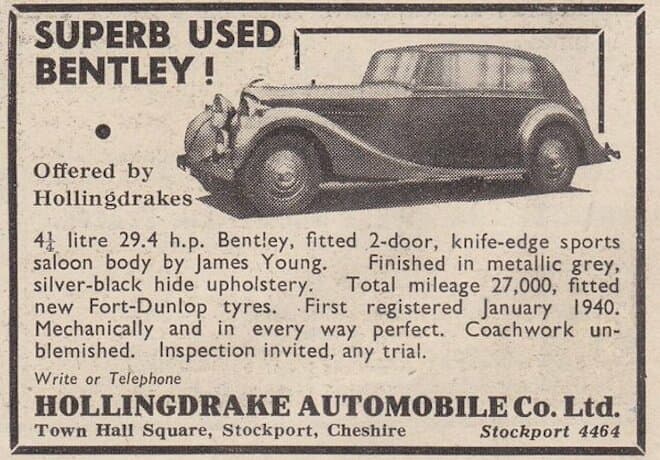
He stated that the Bentley Drivers Club proved to be as helpful as the RREC assisted him in purchasing all the remaining stock parts of the vehicle. The records of the car only went back as far as post-acquisition of the James Young’s company in 1939, but that didn’t stop the vendor in his quest for truth.
“I sent them the name and address of the second owner, a Mr H. F. Shepherd, who had purchased the car second-hand on the 29th of June 1939, as he resided in SE 19, which suggested he may have had the car serviced at Jack Barclay’s. I received a phone call back, the very next day, confirming that Jack Barclay himself had part-exchanged the vehicle in 1939 to Mr Shepherd and had personally signed the original order form (copy in the file). The vehicle was clearly referred to as a James Young DHC on the order form which, when tied to the build sheets, proved enough evidence for both the RREC and BDC to immediately recognise B172 KT as a James Young DHC. Shortly thereafter, I received similar confirmation from Bernard King, stating that he will amend the data in any future reprints of his book.”
During the call with the Jack Barclay’s researcher, he explained that he also believed the vehicle to be a very rare find, possibly one of only three of this DHC model ever built. The vendor immediately contacted Richard Edgell from the RREC Derby Bentley Register for further advice and Edgell confirmed that only seven parallel-doored, James Young-bodied 4¼ models had been built.
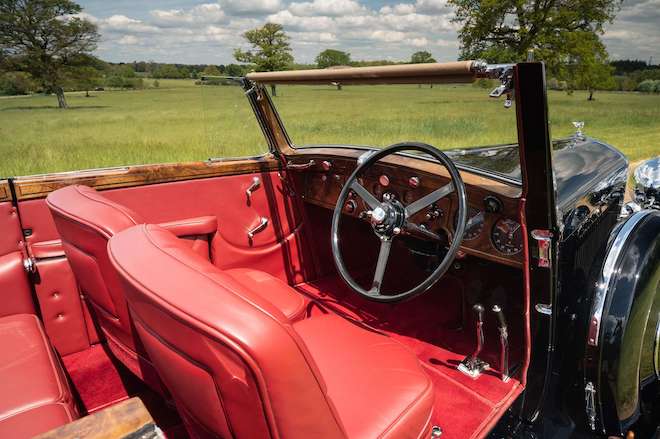
B172 KT was exported to the USA in 1971, although subsequently shipped back to Liverpool in February 1989 requiring a full nut-and-bolt restoration. At that point, in 1992, it was purchased by the owner prior to the current vendor — who spent the following 19 years rebuilding the vehicle — using the best restorers and body builders in the UK.
The current vendor continued, “Several months after the purchase, I contacted his family to see if they knew of the whereabouts of all the chrome bright-work, such as the headlights, fog lamps, horns and radiator mascot, explaining that, as they all had matching numbers, they were unique to the car and crucial in my opinion to retaining the historical provenance. I confirmed I would willingly pay for any items they could trace, only to receive a call several days later saying everything had been located in the son-in-law’s loft and it was all fully restored and bubble-wrapped. I think it’s a testimony to the previous owner and his family’s integrity, that when given the opportunity — despite having to sell the car in an unfinished and clearly uneconomical state — they called to advise me that no payment was required as quote “you never haggled when you purchased the car and the parts clearly belonged to her”, her being a reference to the car’s original vehicle registration, ELA 900.”
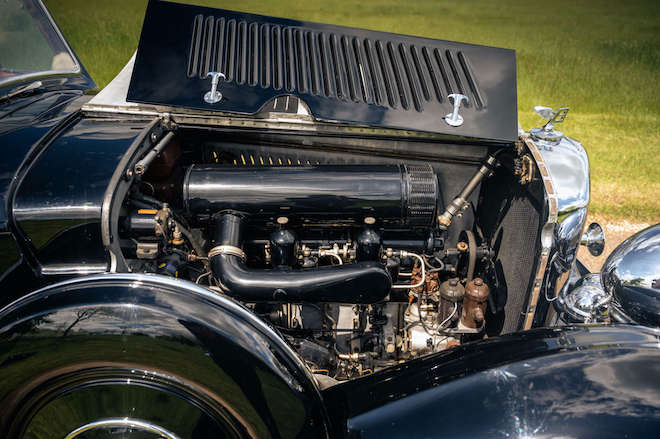
Having finally established the provenance of the model type, the most formidable task unfortunately still lay ahead, with the Driver and Vehicle Licensing Agency (DVLA) refusing to re-allocate the original registration to ELA 900. They stated that their records showed it was an imported vehicle and that no information or records at the DVLA went back as far back as 1937, therefore they could only register the vehicle from the date the vehicle was assessed as roadworthy in 2017 on a Q plate. Despite the vendor’s detailed follow-up, providing clear evidence of the delivery of the vehicle to the Pass & Joyce dealership in early October 1937, they once again stated they could only re-allocate the registration if they had the actual day of the first registration document and could not accept a declaration referring sometime between the 1st and 5th of October 1937.
The vendor was unable to trace the original log book sent with the car to America, so he once again approached the Bentley Drivers Club (BDC) out of pure desperation and sought the help of former deputy chairman, Ken Leam and DVLA liaison officer, Brian Rivett. They arranged directly for the Chairman of the Eligibility Committee to state that it was the BDC’s firm view that the registration date must be the 1st of October, as this date corresponds with the guarantee date and no car was ever guaranteed unless the owner had both paid for and taxed the car. Fortunately, the DVLA lost their appetite for a fight and accepted this argument, immediately issuing a replacement log book from 1-10-1937, whilst also reinstating the original registration number ELA 900!
Anyone viewing this magnificent motor car today will undoubtedly agree that this was indeed a happy ending.
For more car reads, click here.
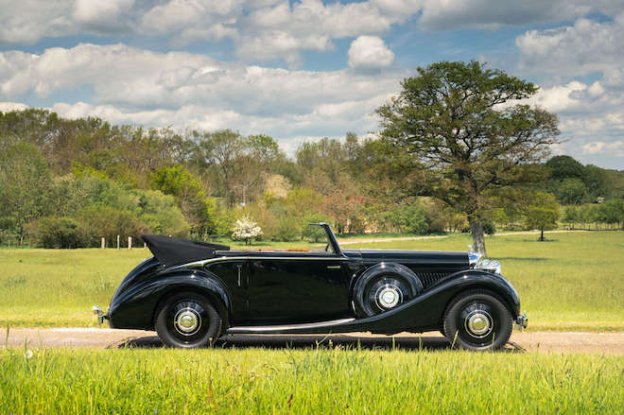
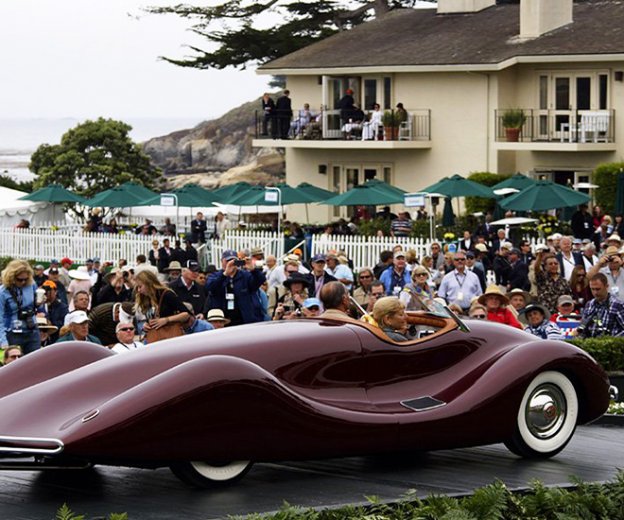
 A muse in the world of classic cars, the 1948 Buick Streamliner is a breathtaking sculpture with hand-crafted curves that’ll inspire poetry. Designed and manufactured in the 1940s by mechanical engineer Norman E. Timbs, the Buick features custom $8,000 aluminum body and steel chassis.
A muse in the world of classic cars, the 1948 Buick Streamliner is a breathtaking sculpture with hand-crafted curves that’ll inspire poetry. Designed and manufactured in the 1940s by mechanical engineer Norman E. Timbs, the Buick features custom $8,000 aluminum body and steel chassis.